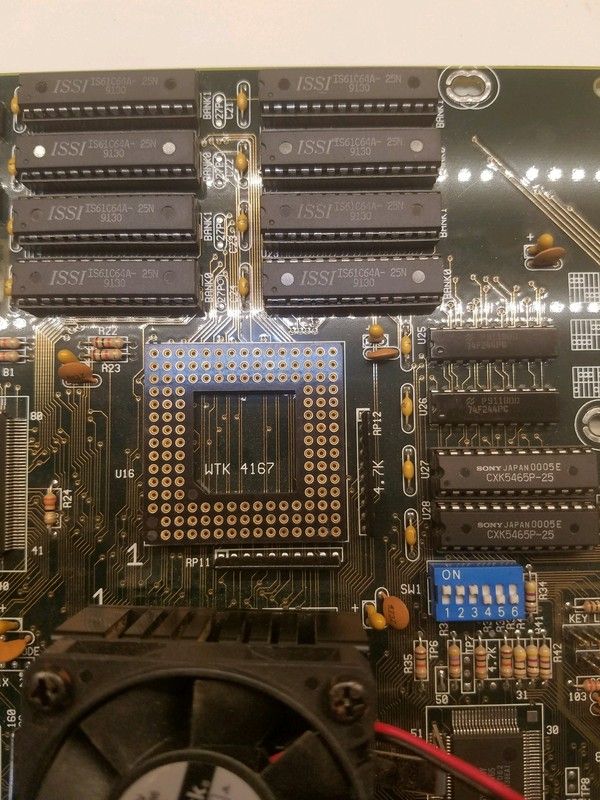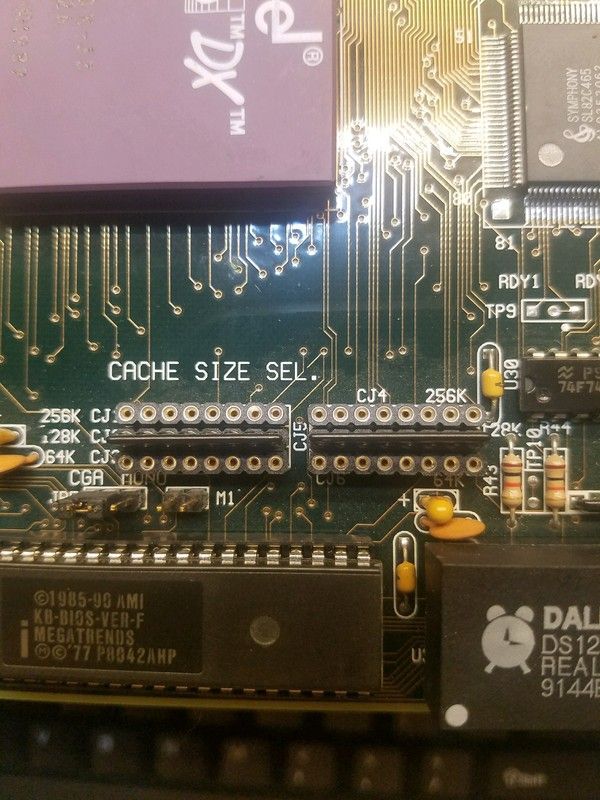First post, by pico1180
The motherboard is an Asus ISA-486S
I was hoping to get a lesson in how to read cache nomenclature. Or at least find a place that publishes the specs. I don't know how reliable stason is, or who has mucked around with this mother board in its 30 years of existence, but the cache configuration that is present on the board isn't one of the configurable combos shown on stason.org
When I boot the motherboard is says there is 64KB of cache. That does coincide with the setting on the motherboard (not pictured), but the configuration of the cache chips on the motherboard doesn't seem to coincide with... anything.
If I knew how to read the cache chips, or find a database containing the specs of these chips, I could sort this out.
Alternatively, I could just buy all new cache chips, but I don't know how sensitive the board is to specific chips.
A lesson in cache would be very helpful here.



